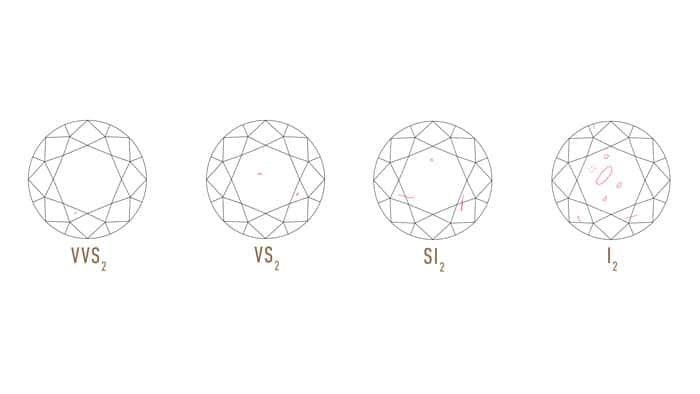Knowledge Center
All you need to know about buying and selling diamonds.
Diamond Weight
Diamonds can be found in all shapes and sizes. The size of a diamond is determined by its weight in carats.
A carat is divided into 100 points, so a diamond of 75 points is .75 carats or 3/4 of a carat. Larger diamonds are more rare, and command a higher price. While size is an obvious factor in determining the value of a diamond, bigger is not necessarily better—all “4 C’s” should be considered. Our free diamond weight calculator is the perfect tool for your mounted and loose diamonds. Just enter shape and basic measurements to instantly calculate carat weight.

Diamond Cut
Diamond Cut Makes All The Difference.
No matter the shape, if you’ve noticed the captivating sparkle of a beautiful diamond, what you’re actually seeing is the light transmitting through it. A well-cut diamond’s facets interact with light in perfect symmetry, thus enabling an impressive dazzle.Diamond Color
Absence of color makes a diamond more valuable.
A colorless diamond essentially acts as a prism, forming a rainbow of sorts, which is commonly referred to as “fire.” The GIA color scale at right shows diamond color range, from “colorless” to “light.” Differences between one grade of color and the next can often be far less obvious to an untrained eye.

Diamond Clarity
Clarity is defined by GIA as the absence of inclusions. Viewed as birthmarks, inclusions are seen as nature’s fingerprints in the diamond.
A diamond’s clarity is determined under 10 power magnification by a trained eye, taking into account the number, size, type, and location of the inclusions. The fewer inclusions in a diamond, the more valuable it is. The GIA Clarity scale includes 11 grades, ranging from flawless to included. View our Virtual Clarity Grading tool to familiarize yourself with GIA grading standards or download our Clarity Grading Guide.

